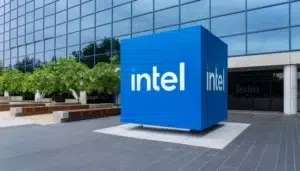Intel Corporation has initiated one of the most significant workforce reductions in its history, with plans to cut up to 20% of its global workforce, potentially affecting nearly 20,000 employees.
The move, led by newly appointed CEO Lip-Bu Tan, is part of Intel’s broader strategy to become leaner, faster, and more efficient.
It comes in response to mounting financial pressures and growing competition in the semiconductor industry.
Initial Layoffs and Global Impact
The first wave of layoffs began with 107 employees at Intel’s Santa Clara headquarters, as disclosed in a WARN notice filed in California.
These initial cuts include engineers, senior managers, and roles across CPU and GPU development teams.
However, the impact is far-reaching, with reports indicating that Intel Foundry, the company’s internal manufacturing division, will bear the brunt of the reductions.
Affected regions include:
- United States: Major cuts in California and Oregon
- Germany: Closure of the automotive chip division in Munich
- China and Israel: Reports suggest up to 20% workforce reduction in Intel China and layoffs at the Kiryat Gat manufacturing site.
Intel Key Units Shut and Roles Outsourced
As part of the restructuring:
- Intel has shut down its automotive chip division in Germany, a unit once seen as a strategic bet on the future of mobility. The division, led by Intel veteran Jack Weast, was focused on software-defined vehicle platforms. Most employees in this unit are expected to be laid off.
- The company is outsourcing parts of its marketing operations to Accenture, with a focus on customer communication roles. AI-driven systems will increasingly support these functions, reflecting Intel’s push to modernize its digital capabilities.
Cost-Cutting Goals and Strategic Rationale
Intel aims to reduce operating costs by $500 million in 2025 and an additional $1 billion in 2026.
CEO Lip-Bu Tan has emphasized the need to flatten management structures and eliminate organizational complexity.
He believes this will help empower engineers and speed up innovation and execution.
In an internal memo, Intel Manufacturing VP Naga Chandrasekaran acknowledged the difficulty of the decision, stating, “These are difficult actions but essential to meet our affordability challenges and current financial position.”
Intel has assured that affected employees will receive either a 60-day warning or a four-week notice. In addition, they will be provided with nine weeks of pay and benefits.
Note: We are also on WhatsApp, LinkedIn, Google News, and YouTube, to get the latest news updates. Subscribe to our Channels. WhatsApp– Click Here, Google News– Click Here, YouTube – Click Here, and LinkedIn– Click Here.



